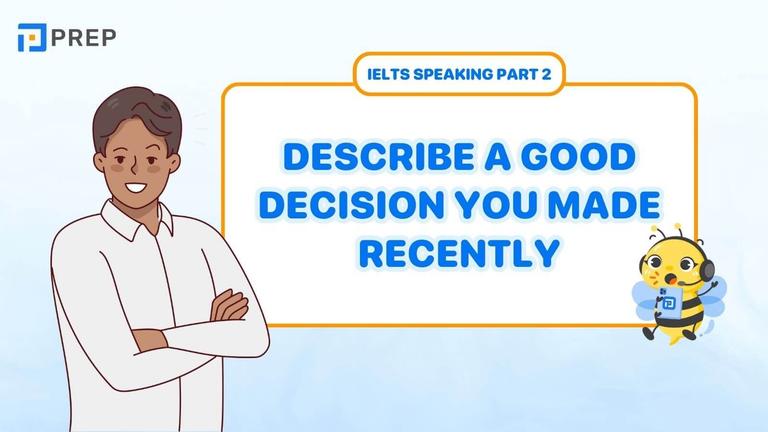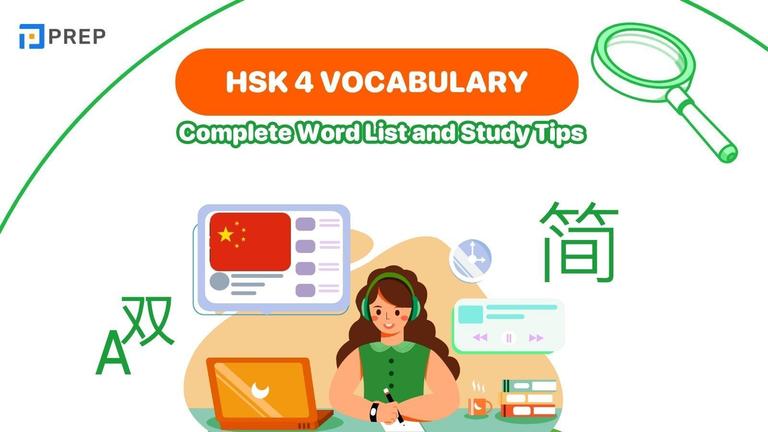5 commonly used relative pronouns in English: Who, Which, That, Whose, Whom
Understanding relative pronouns transforms your writing from basic to sophisticated, creating seamless connections between ideas that flow naturally and elegantly. These five essential connectors—who, whom, which, whose, and that—serve as bridges in your sentences, linking related information while maintaining clarity and precision. When you master relative pronouns, you unlock the ability to express complex thoughts in a single, well-structured sentence rather than choppy, disconnected fragments.
- I. Definition for Relative Pronoun: The Core Concept
- II. The 5 Core Relative Pronouns: A Practical Guide
- III. The Single Most Important Rule: Defining vs. Non-Defining Clauses
- IV. Understanding Possessive & Compound Relatives (whose, whoever, whatever)
- V. Put Your Knowledge to the Test: Interactive Quiz
- VI. Frequently Asked Questions

I. Definition for Relative Pronoun: The Core Concept
A relative pronoun introduces a relative clause (also known as an adjective clause), which provides additional information about a noun or pronoun mentioned earlier in the sentence. This grammatical tool allows you to combine two related ideas into one cohesive statement, eliminating redundancy while maintaining all essential information.
The magic happens when you recognize that relative pronouns replace a noun in the second part of your combined sentence. In "The book that I borrowed is fascinating," the word "that" replaces "the book" in what would otherwise be "The book is fascinating" when standing alone. This replacement creates a smooth, natural flow that sophisticated speakers and writers use instinctively.
-
Before using relative pronouns: The students arrived late. The students missed the important announcement. They seemed confused during the entire class.
-
After using relative pronouns: The students who arrived late missed the important announcement, which left them confused during the entire class.
This transformation demonstrates how relative pronouns eliminate repetition while creating more dynamic, interconnected sentences that engage readers and demonstrate mastery of English structure.
II. The 5 Core Relative Pronouns: A Practical Guide
Mastering these five fundamental relative pronouns gives you complete control over how you connect ideas, whether you're writing academic papers, professional emails, or creative content that demands precision and elegance.
-
Who (for People, Subject) & Whom (for People, Object)
The distinction between "who" and "whom" represents one of the most persistent challenges in English, yet understanding their proper usage immediately elevates your writing to a more sophisticated level. Both pronouns refer exclusively to people, but their roles within the sentence determine which one you should choose.
|
Aspect |
WHO |
WHOM |
|
Function |
Subject of the relative clause |
Object of the relative clause |
|
Action Role |
Performs the action |
Receives the action |
|
Test Method |
Replace with "he" or "she" |
Replace with "him" or "her" |
|
Example Sentence |
"The engineer who designed this bridge" |
"The colleague whom I mentioned" |
|
Test Application |
"She designed this bridge" ✓ |
"I mentioned him" ✓ |
|
Formality Level |
Used in all contexts |
More common in formal writing |
|
Modern Trend |
Increasingly used for both functions |
Often replaced by "who" in casual speech |
|
Professional Writing |
Standard usage |
Demonstrates linguistic precision |
Usage Context Guidelines:
-
Informal Settings: Many speakers default to "who" regardless of grammatical function, creating sentences like "Who did you meet?" instead of the technically correct "Whom did you meet?"
-
Formal Writing: Academic papers, professional communication, and sophisticated writing benefit from maintaining the who/whom distinction, as readers interpret correct usage as evidence of careful attention to detail and advanced language skills.
-
Which (for Things & Animals)
Relative pronouns "Which" exclusively refers to non-human entities—objects, concepts, animals, or abstract ideas—and provides a clear alternative when "who" would be inappropriate. This pronoun often introduces non-essential information, particularly when preceded by commas, though it can also appear in essential clauses.
Examples in Action:
-
"The laptop which I purchased last month has exceeded all my expectations"
-
"The policy which governs remote work has recently been updated to reflect current industry standards"
Notice how "which" smoothly connects the descriptive information to the main noun without creating confusion about the reference. When choosing between "which" and "that," consider the formality of your writing and whether the information is essential to understanding your main point.
-
Whose (for Possession)
"Whose" stands alone as the possessive relative pronoun, indicating ownership or close association regardless of whether the antecedent is a person, thing, or abstract concept. This versatility makes relative pronouns "whose" particularly valuable for creating sophisticated sentences that avoid awkward constructions.
|
For People |
For Things |
|
"The student whose presentation impressed the committee received the scholarship" |
"We visited the museum whose architecture dates back to the eighteenth century" |
|
Shows possession of presentation by student |
Shows relationship between museum and architecture |
Common Misconception Busted: Many writers mistakenly believe relative pronouns "whose" can only refer to people, but this limitation doesn't exist in standard English usage. "The company whose profits increased dramatically" is perfectly acceptable and often more elegant than alternatives like "the company of which the profits increased."
-
That (The Versatile Option for People & Things)
The relative pronoun "that" is used to replace both people and things/animals in a sentence, making it the most flexible option among all relative pronouns. For example:
For Things/Animals:
-
The laptop that crashed during the presentation has been repaired. ➞ The relative pronoun "that" replaces "the laptop" in the sentence.
-
The strategy that we implemented last quarter produced excellent results. ➞ The relative pronoun "that" replaces "the strategy" in the sentence.
-
The software that everyone recommends costs too much for our budget. ➞ The relative pronoun "that" replaces "the software" in the sentence.
For People:
-
The employee that received the promotion worked overtime consistently. ➞ The relative pronoun "that" replaces "the employee" in the sentence.
-
The teacher that explained the concept made it easy to understand. ➞ The relative pronoun "that" replaces "the teacher" in the sentence.
-
The manager that approved this project has excellent judgment. ➞ The relative pronoun "that" replaces "the manager" in the sentence.
Superlatives + That Structure:
In addition, we often see the structure "Superlatives + That" in sentences, where "that" follows expressions indicating the highest degree. For example:
-
It was the most challenging project that our team has ever completed.
-
She is the most dedicated student that I have ever taught.
-
This is the best solution that we could find for the problem.
That + Prepositions Structure:
Last is the structure "That + prepositions" in sentences, where the preposition appears at the end of the relative clause. For example:
-
We found the documents that you were looking for.
-
He mentioned the conference that she spoke at.
-
This is the company that I want to work for.
Key Limitation: Remember that relative pronouns "that" cannot be used in non-essential clauses (those requiring commas). It only works in defining clauses that provide essential information to identify the specific noun being discussed.
III. The Single Most Important Rule: Defining vs. Non-Defining Clauses
This distinction represents the cornerstone of proper relative pronoun usage, determining not only which relative pronouns you can use but also the punctuation patterns that signal your meaning to readers with precision and clarity.
-
Defining Clauses: Essential Information (No Commas)
Purpose: Identify which specific person, thing, or concept you're discussing
Defining clauses contain information absolutely necessary for understanding your meaning. Without this information, your sentence would be unclear, incomplete, or misleading to readers who need these details to understand your reference.
Rules:
-
❌ Never use commas
-
✅ Can use: who, whom, which, whose, that
-
✅ Information is removable? NO—meaning changes
Example: "Students who complete their assignments on time demonstrate strong time management skills"
-
Non-Defining Clauses: Extra Information (With Commas)
Purpose: Provide supplementary details that enhance understanding
Non-defining clauses function like parenthetical comments—interesting and valuable, but removable without damaging the sentence's core meaning. These clauses provide background information or additional context rather than essential identification.
Rules:
-
✅ Always use commas
-
✅ Can use: who, whom, which, whose
-
❌ Cannot use: that
-
✅ Information is removable? YES—main meaning intact
Example: "My supervisor, who has worked here for fifteen years, announced her promotion yesterday"
-
Visual Comparison Chart: The Key Differences at a Glance
|
Defining Clauses |
Non-Defining Clauses |
|
Purpose: Essential identification |
Purpose: Additional information |
|
Commas: Never used |
Commas: Always required |
|
Pronouns: who, whom, which, whose, that |
Pronouns: who, whom, which, whose (never that) |
|
Example: The book that changed my perspective |
Example: The book, which I read last summer, changed my perspective |
|
Test: Removable? No—meaning changes |
Test: Removable? Yes—main meaning intact |
IV. Understanding Possessive & Compound Relatives (whose, whoever, whatever)
-
Possessive Relative Pronouns
"Whose" remains the primary possessive relative pronoun, indicating ownership or close association across all categories of antecedents. It surprises some people to learn that "whose" can refer to both people and things. Some will argue that "of which" is a better construction when talking about things rather than people, but this results in unnecessary awkwardness. The truth is that "whose" has been widely and correctly applied to nonhumans for hundreds of years.
-
She apologized to the student whose laptop got damaged.
-
The technology whose impact we're studying has revolutionized communication.
The company whose profits increased dramatically expanded into new markets. The company, the profits of which increased dramatically, expanded into new markets. (This is correct but cumbersome.)
-
Compound Relative Pronouns
The term compound relative pronoun sounds complex, but it really isn't. Simply put, compound relative pronouns apply universally to a number of people or things without specifying individual identity. They include whoever, whomever, whichever, and whatever.
-
Please tell whoever calls that the meeting has been postponed.
-
Whomever you recommend for the position will receive serious consideration.
-
Whichever proposal the committee selects must include detailed budget projections.
-
Sarah will excel at whatever career path she chooses to pursue.
These compound relatives often appear in conditional statements, general principles, and situations requiring flexibility rather than specific identification. "Whatever decision the board makes will affect our entire department" demonstrates how "whatever" introduces indefinite content while maintaining grammatical structure.
V. Put Your Knowledge to the Test: Interactive Quiz
Challenge yourself with these carefully crafted questions that test your understanding about selection of relative pronouns, comma usage, and the advanced principles covered throughout this comprehensive guide.
-
Question 1: Choose the correct relative pronoun: "The scientist _____ research revolutionized medicine received international recognition." a) who b) whom c) whose d) which
-
Question 2: Identify the comma error: "My laptop which I bought last year, has started showing signs of wear." a) No comma needed after "laptop" b) Comma needed after "year" c) Both commas incorrect d) No error
-
Question 3: Which sentence correctly omits the relative pronoun? a) "The strategy we implemented worked perfectly." b) "The manager implemented the strategy works here." c) "The strategy worked perfectly was innovative." d) "The implementation we saw was successful strategy."
-
Question 4: Select the appropriate formal structure: a) "The principles which we operate by" b) "The principles by which we operate" c) "The principles that we operate by" d) "The operating principles which by"
-
Question 5: Choose the correct compound relative pronoun: "_____ submitted this proposal deserves recognition for their innovative thinking." a) Who b) Whom c) Whoever d) Whomever
Answer Key:
-
c) whose - Indicates possession of the research by the scientist
-
a) No comma needed after "laptop" - This is a defining clause requiring no commas
-
a) "The strategy we implemented worked perfectly." - "That" can be omitted when it's the object
-
b) "The principles by which we operate" - Formal structure places preposition before the pronoun
-
c) Whoever - Functions as the subject of the clause, referring to any person meeting the condition
VI. Frequently Asked Questions
-
What are relative adverbs (where, when, why)?
Relative adverbs function similarly to relative pronouns but introduce clauses that describe time, place, or reason rather than providing additional information about people or things. "Where" indicates location ("The office where I work"), "when" specifies time ("The day when we met"), and "why" explains reasons ("The reason why she succeeded").
These adverbs often replace prepositional phrases with relative pronouns, creating more concise expressions. Instead of "the building in which I work," you can write "the building where I work," achieving the same meaning with greater simplicity.
-
Which pronouns are for people, which for things, and which are for both?
-
For people exclusively: "who" and "whom" refer only to human beings, never to animals, objects, or abstract concepts, maintaining this distinction across all contexts and formality levels.
-
For things and animals: relative pronouns "which" handles non-human references including objects, concepts, animals, and abstract ideas, providing clear alternatives when human-specific pronouns would be inappropriate.
-
For both people and things: "that," "whose," and compound relatives (whoever, whatever) demonstrate flexibility across categories, allowing you to refer to any type of antecedent while maintaining grammatical correctness.
-
What's the real difference between using that and which?
While both relative pronouns can refer to things, their usage patterns reveal important distinctions that affect meaning and style. "That" typically introduces essential information in defining clauses without commas, while "which" often appears in non-essential clauses requiring comma separation.
American English tends to favor "that" for defining clauses and reserves "which" for non-defining clauses, creating a clearer distinction for readers. British English uses both more interchangeably, though the comma rules remain consistent across both varieties.

Hi I'm Chloe, and I am currently serving as an Product Content Administrator at Prep Education. With over five years of experience in independent online IELTS study and exam preparation, I am confident in my ability to support learners in achieving their highest possible scores.
Comment
Premium content
View allPersonalized roadmap
Most read












